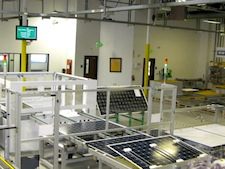 Guest post by Kriss Bergethon
Guest post by Kriss Bergethon
A recent industry analysis projects the amount of solar power installed to grow to 15.5 percent per year, but revenues are to stay flat until 2016. Lux Research provided the report. A report from Navigant Consulting discovered that the price of solar panels is down almost 20 percent as of August 2011. The information derived from these two reports show that the consumer is poised to benefit from the price reduction while manufacturers can expect an almost flat profit margin for the next few years.
Manufacturers of solar panels are in a constant price competition. This literally boils down to shaving price per watt by pennies in order to beat out competitors. The reports mean shrinking profit margins with concerns over demand for panels staying strong. Manufacturing capacity for solar hardware is increasing, but the unknown factor is if there will be enough buyers to consume the increased output.
Consumers stand to benefit from the softening in prices as it translates into more solar capacity for the same amount. The lower prices give rise to the idea that solar leasing, an alternative to purchasing panels outright, may gain more traction. However, lower prices go beyond that. A solar industry analyst feels there is an ultimate benefit in the falling prices. It makes solar power leasing viable in states that have been written off in the past.Solar power leasing is designed to provide an alternative to purchasing a solar panel array upfront. Instead of buying the solar panels, consumers pay a monthly fee that reduces their electric bill. In a lease situation, a predetermined fee is set for 20 years. The consumer can also participate in a power purchase arrangement; the consumer buys power from the solar panels. A purchase arrangement is cheaper than buying from traditional grid suppliers.
A consumer can expect to pay $30,000 for the purchase and installation of a complete rooftop solar power array. A 30 percent federal tax rebate and possible state incentives serve to lower the cost. The solar panels make up less than half of the total price, with the rest of the cost going towards labor and necessary hardware. Consumers are going to see little, if any, benefit in the price competition from producers. The price change is going to be seen mainly by installers and solar power lease companies.
It is thought that solar power has the potential to reach what is known as “grid parity,” wherein the cost of solar power is cheaper than traditional grid suppliers. This theory can become reality if the price of solar panels continues their precipitous price drops.
Lux Research projects that grid parity will reach commercial solar panel installations first, and that ten countries will reach that point by 2016. For the time being, state subsidies and the cost of retail power are key to allowing solar power to undercut grid power. Anticipated increases in the cost of wholesale and retail electricity will serve to increase demand for solar power.
——————-
Kriss Bergethon is a solar expert and writer from Colorado. Visit his site at Solar Panels for more information.
Related articles
- Solyndra bankruptcy and solar power costs (nextbigfuture.com)
- Why It’s Not A Bad Thing For Solar Power That Solyndra Went Bankrupt (fastcompany.com)
- Solar Panel Prices Continue Dropping, Grid Parity Not Magic Bullet for PV (scienceprogress.com




Nice one, We have used local crews for installation. Thanks for sharing..